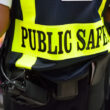Selling public safety on broadband network might be tougher than expected
ORLANDO–There is little question that the proposed nationwide public safety wireless broadband network for first responders will deliver capabilities—by leveraging next-generation commercial technologies—to first responders in the field that previously were the stuff of fantasy. However, based on the discussion today at the IWCE-MRT Wireless Summit, proponents of the network will have some work to do to convince first responders those capabilities not only are needed but also worth the monthly user fees they’ll have to pay to access the network.
While data and voice have a place in public-safety communications, “in the public-safety world, still today, voice two-way radio is king,” said Ben Holycross, radio systems manager for Polk County, Fla., who participated on a panel today with Morgan O’Brien, chairman and CEO of Cyren Call Communications, the agent/advisor to the Public Safety Spectrum Trust (PSST). The PSST is expected to be named soon as the public-safety licensee that will work with the winner of the 700 MHz D Block auction to build the network to public-safety specifications.
“The whole purpose of the 700 MHz spectrum, going back to the beginning, was for additional voice capability. We’ve lost that thrust,” Holycross said. “A police officer on the street at 3 a.m. who’s trying to take down an armed robber doesn’t have time to open up a data file. He needs a dispatcher who can tell him, on a clear voice channel, that the subject is armed and dangerous.”
One attendee, a firefighter with 18 years of experience, in addition to 20 years as a communications technician, echoed Holycross and suggested it is unrealistic to think a firefighter would use the video and data capabilities anticipated for the network.
“I have to be out of bed and on the truck in one minute, I have to reach the furthest point of my response district in five minutes, and I have to enter the structure upon arrival in one minute,” he said. “I don’t have the time for video, I don’t have time for data transmission, and I can’t think of a situation as a responding firefighter where I’d use that. … Mission-critical voice is the only thing that drives what we do to make our mission successful.”
Holycross agreed, to a degree. “[Transmitting] video of an incident in process to a responding officer is probably going to get him into a car wreck,” he said. “That’s a real risk. We’ve run into that ever since they first started to put laptop computers in police cars, and before that, mobile data terminals.”
But he later acknowledged that the ability to download building blueprints and floor plans to an incident commander would be quite useful in terms of improving directions to firefighters who have entered the structure. In addition, biometric sensors that monitor vital signs could alert commanders to the need to get a firefighter out of the structure well before he or she succumbs to heat-related maladies.
Another major question on the minds of public-safety communications officials concerns the network’s as-yet-to-be-defined economic model. As Holycross pointed out, the commercial entity that will build the network will have a fiduciary responsibility to its investors to generate a sufficient return on investment, which could result in monthly user fees that are impractical for many agencies.
“We need to determine how this is going to be funded and how it’s going to be maintained an operated,” he said.
Cyren Call fully understands the importance of educating the first-responder community, even at this early stage, O’Brien said. “It would be a terrible irony if we were to go through this whole process and we end up with a system that … large numbers of public-safety agencies don’t want to subscribe to.”
Also important is finding a balance between public safety’s needs and those of the commercial entity that will build the network.
“You can imagine a system built to such a high standard that it can’t be financed. And you can imagine a system that is built so close to the current commercial [networks] that it wouldn’t work for public safety,” O’Brien said. “So you have to imagine a system that is somewhere in between. And that will be a process of negotiation.”
The dickering already has begun. The PSST and Cyren Call has had in-depth discussions with all of the potential D Block bidders—“some of them are obvious and some of them are not so obvious”—and expects to issue a document in the next couple of days that will contain public safety’s preferred requirements for the network, O’Brien said.
Though he believes it is impossible to underestimate the importance of the negotiations, calling them the “guts of the job,” O’Brien also thinks a consensus will be reached, because of what’s at stake.
“If no successful outcome is reached, the D Block winner doesn’t get that license. That puts tremendous pressure on the D Block winner to be reasonable and come to terms with public safety,” he said. “And if we don’t do a good job on the PSST and Cyren Call side of listening to the requirements of public safety and negotiating well with our partner … public safety won’t embrace and adopt the network.”

















